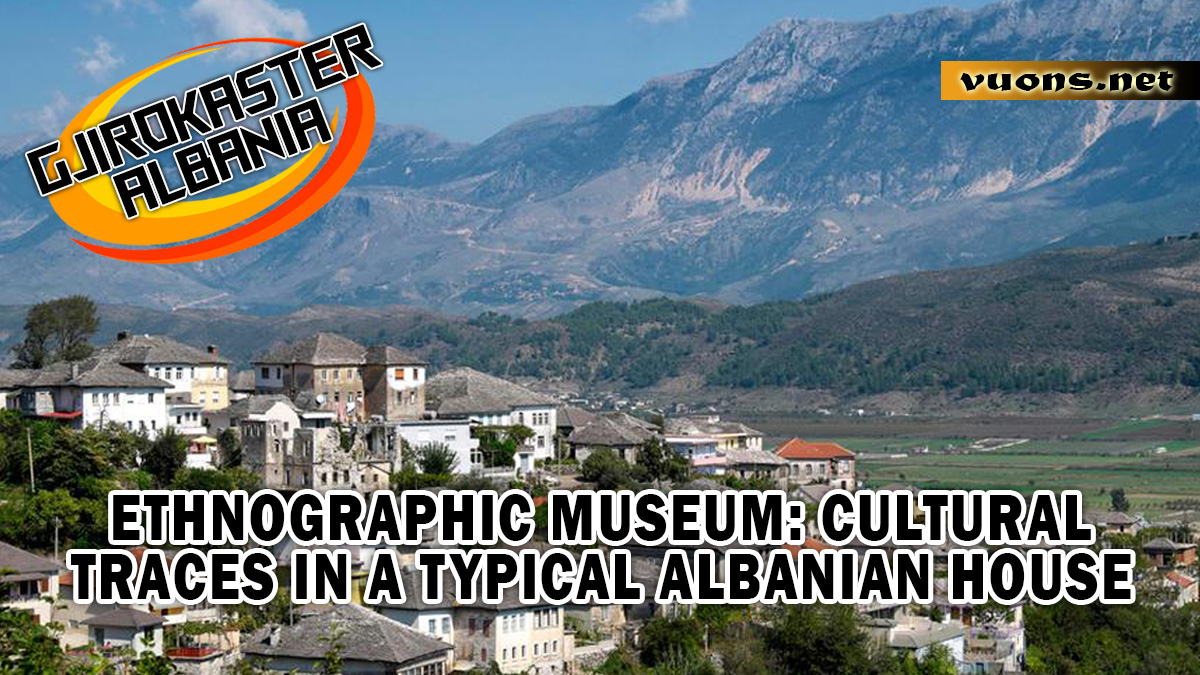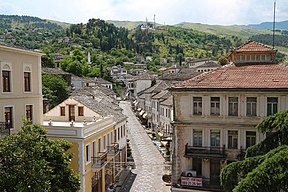Gjirokastër, a Historical Gem in Southern Albania
Gjirokastër’s Long History: From Ottoman Era to World Heritage
Gjirokastër, a Historical Gem in Southern Albania – Gjirokastër, known as the “Stone City,” has a long history that dates back to the Ottoman Empire. The city was first mentioned in a 14th-century document and began to develop as an important center in the 15th century, when it became part of the Ottoman Empire. Gjirokastër’s distinctive architectural structures, such as stone-roofed houses and cobblestone Streets, began to take shape during this time, reflecting the strong influence of Ottoman culture in everyday life.
Gjirokastër Castle, which stands majestically on a hilltop, bears witness to the city’s history. Originally built in the 12th century, the castle was significantly expanded by the Ottomans in the 15th century and served as a strategic defensive fortress. Today, the castle is a major tourist attraction that also houses a museum and various historical artifacts.
In addition to its physical remains, Gjirokastër also has a deep cultural heritage. In the 20th century, the city was known as the birthplace of Ismail Kadare, one of Albania’s most famous writers. This heritage has strengthened Gjirokastër’s identity as a city of culture and literature. UNESCO recognized Gjirokastër’s importance in 2005 by designating it a World Heritage Site. This designation not only protects the city’s historical buildings but also highlights its unique cultural and architectural values. To this day, Gjirokastër continues to symbolize the intersection of history, art and tradition.
Gjirokastër Castle: Medieval Glory on a Hilltop
Gjirokastër Castle stands majestically on a hill overlooking the city of Gjirokastër, Albania. As one of the largest fortresses in the Balkans, it is a symbol of power and historical heritage that spans centuries. Originally built in the 12th century, the castle underwent extensive expansion during the Ottoman era in the 15th century, making it an important strategic defense center.
The structure served not only as a fortress, but also as a center of government and a refuge for the population during times of conflict. Within the castle complex, there are watchtowers, armories, and prisons that were used during various periods of history. These elements provide a clear picture of the castle’s vital role in maintaining stability in the surrounding region.
Today, Gjirokastër Castle is a major tourist attraction offering stunning views of the Drino Valley. Tourists can explore the various rooms that house historical artifacts, including a collection of weapons and military objects from the Ottoman era to World War II. One of the main attractions is the National Museum of Weapons, which displays various war equipment used in the region.
Every five years, the castle hosts the Albanian National Folklore Festival, a cultural celebration featuring local music, dance, and traditions. This event reinforces the castle’s role as an important symbol of Albanian culture and history. With its architectural beauty and historical heritage, Gjirokastër Castle remains a highlight for anyone visiting the city.
Unique Architecture of Stone-Roofed Houses That Define the City
Gjirokastër, Albania, is known for the unique architecture of the stone-roofed houses that define the city. The traditional houses, known as “kulas,” reflect the legacy of the Ottoman culture that dominated the region for centuries. With roofs made of flat limestone, these houses are designed to cope with the local climate, providing protection from the heat in the summer and the cold in the winter.
Each house in Gjirokastër is built on a solid foundation, adapting to the contours of the steep hills. These structures often consist of several stories, with the basement used for storage and the upper floor for living areas. Large windows, wooden balconies, and carved details are distinctive elements that add to the aesthetic beauty of these houses.
One of the best examples of this architecture can be found in the Zekate house, which was built in the 19th century. The house features a symmetrical design, small towers, and elaborate interior decoration, reflecting the social status of its owners at the time. The beauty and uniqueness of stone-roofed houses like Zekate are the reason Gjirokastër is nicknamed the “Stone City.” UNESCO recognized Gjirokastër’s historical and architectural value by listing it as a World Heritage Site in 2005. Since then, conservation efforts have been ongoing to preserve these traditional houses, which are a major draw for tourists from all over the world. Walking along the city’s cobblestone streets, visitors can feel the atmosphere of the past preserved in every corner.
Cobblestone Streets and Traditional Bazaars: Exploring Local Life
Gjirokastër, a historic city in southern Albania, offers an authentic experience through its cobblestone streets and traditional bazaars. The narrow, winding streets, lined with large stones, are the city’s signature. Built to follow the contours of the hills, they connect residential areas to the city center. Walking along these streets gives visitors a chance to experience the atmosphere of a bygone era.
Gjirokastër’s traditional bazaar, located in the city center, has been a center of economic and social activity since the Ottoman era. The bazaar is filled with small shops selling a variety of local products, from handicrafts, silver jewelry, to traditional Albanian woven carpets. Many local craftsmen still use traditional techniques to produce their work, reflecting skills passed down from generation to generation.
In addition to handicrafts, the bazaar is also a place to enjoy local cuisine. Small stalls along the bazaar offer traditional dishes such as qofte, byrek, and baklava. The distinctive aroma of spices adds to the appeal for visitors who want to taste the authentic Albanian flavors.
The bazaar is also a meeting place for locals, creating a warm and friendly atmosphere. Visitors can experience firsthand the daily interactions that reflect a simple yet meaningful life. With its authentic cobbled streets and lively bazaar atmosphere, Gjirokastër offers a unique experience for anyone who wants to immerse themselves in its cultural heritage and local life.




